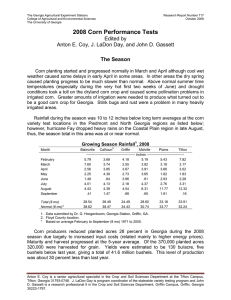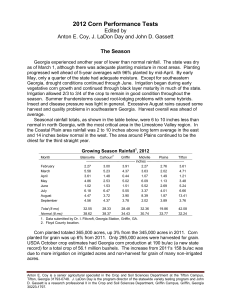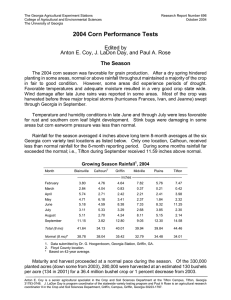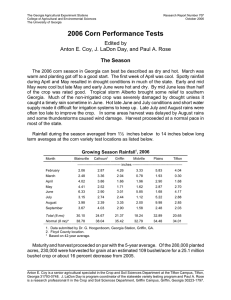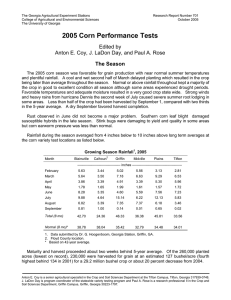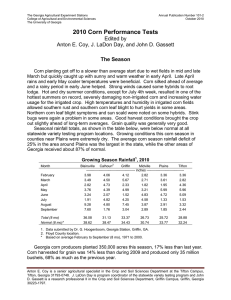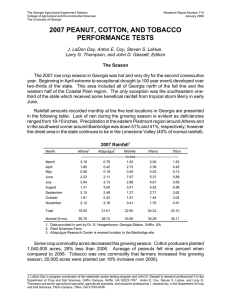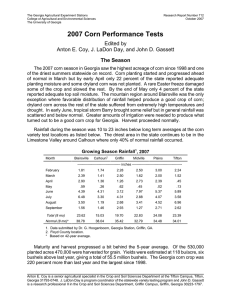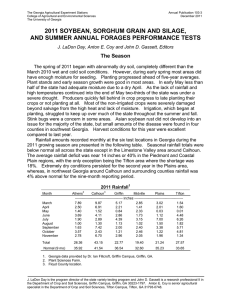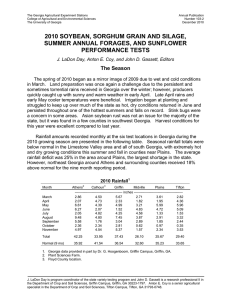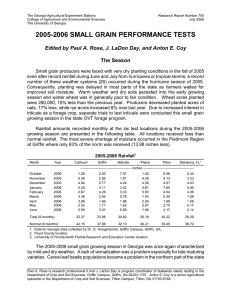Document 11093289
advertisement
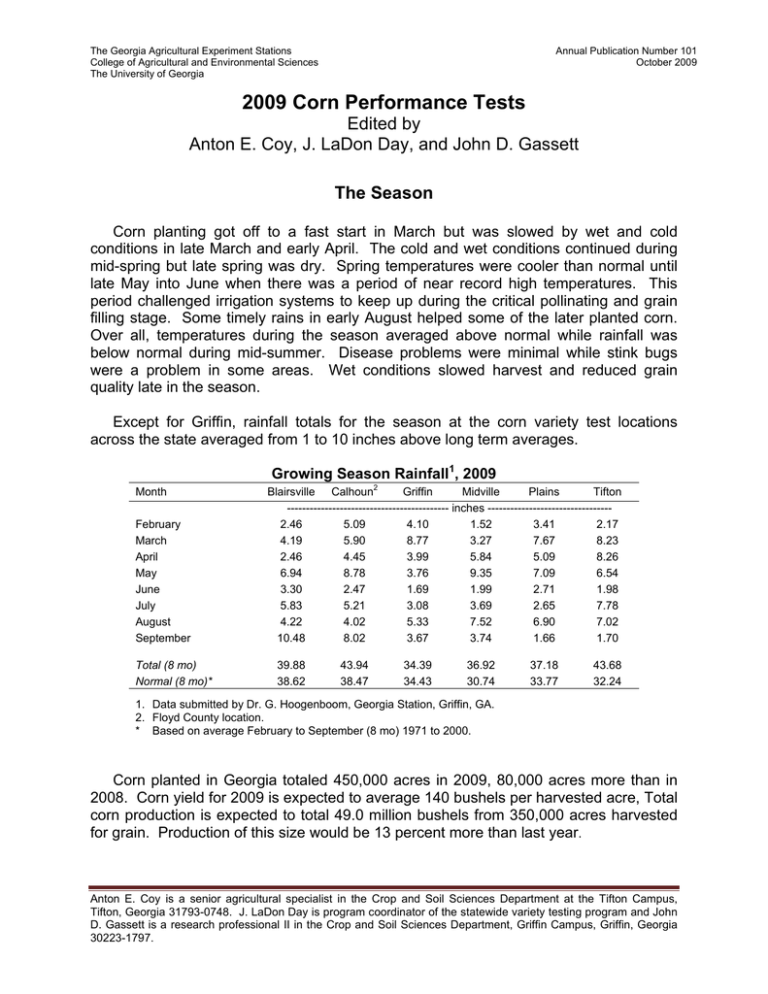
The Georgia Agricultural Experiment Stations College of Agricultural and Environmental Sciences The University of Georgia Annual Publication Number 101 October 2009 2009 Corn Performance Tests Edited by Anton E. Coy, J. LaDon Day, and John D. Gassett The Season Corn planting got off to a fast start in March but was slowed by wet and cold conditions in late March and early April. The cold and wet conditions continued during mid-spring but late spring was dry. Spring temperatures were cooler than normal until late May into June when there was a period of near record high temperatures. This period challenged irrigation systems to keep up during the critical pollinating and grain filling stage. Some timely rains in early August helped some of the later planted corn. Over all, temperatures during the season averaged above normal while rainfall was below normal during mid-summer. Disease problems were minimal while stink bugs were a problem in some areas. Wet conditions slowed harvest and reduced grain quality late in the season. Except for Griffin, rainfall totals for the season at the corn variety test locations across the state averaged from 1 to 10 inches above long term averages. Growing Season Rainfall1, 2009 Month February March April May June July August September Total (8 mo) Normal (8 mo)* Blairsville Calhoun2 Griffin Midville Plains Tifton ------------------------------------------- inches --------------------------------2.46 5.09 4.10 1.52 3.41 2.17 4.19 5.90 8.77 3.27 7.67 8.23 2.46 4.45 3.99 5.84 5.09 8.26 6.94 8.78 3.76 9.35 7.09 6.54 3.30 2.47 1.69 1.99 2.71 1.98 5.83 5.21 3.08 3.69 2.65 7.78 4.22 4.02 5.33 7.52 6.90 7.02 10.48 8.02 3.67 3.74 1.66 1.70 39.88 38.62 43.94 38.47 34.39 34.43 36.92 30.74 37.18 33.77 43.68 32.24 1. Data submitted by Dr. G. Hoogenboom, Georgia Station, Griffin, GA. 2. Floyd County location. * Based on average February to September (8 mo) 1971 to 2000. Corn planted in Georgia totaled 450,000 acres in 2009, 80,000 acres more than in 2008. Corn yield for 2009 is expected to average 140 bushels per harvested acre, Total corn production is expected to total 49.0 million bushels from 350,000 acres harvested for grain. Production of this size would be 13 percent more than last year. Anton E. Coy is a senior agricultural specialist in the Crop and Soil Sciences Department at the Tifton Campus, Tifton, Georgia 31793-0748. J. LaDon Day is program coordinator of the statewide variety testing program and John D. Gassett is a research professional II in the Crop and Soil Sciences Department, Griffin Campus, Griffin, Georgia 30223-1797.
